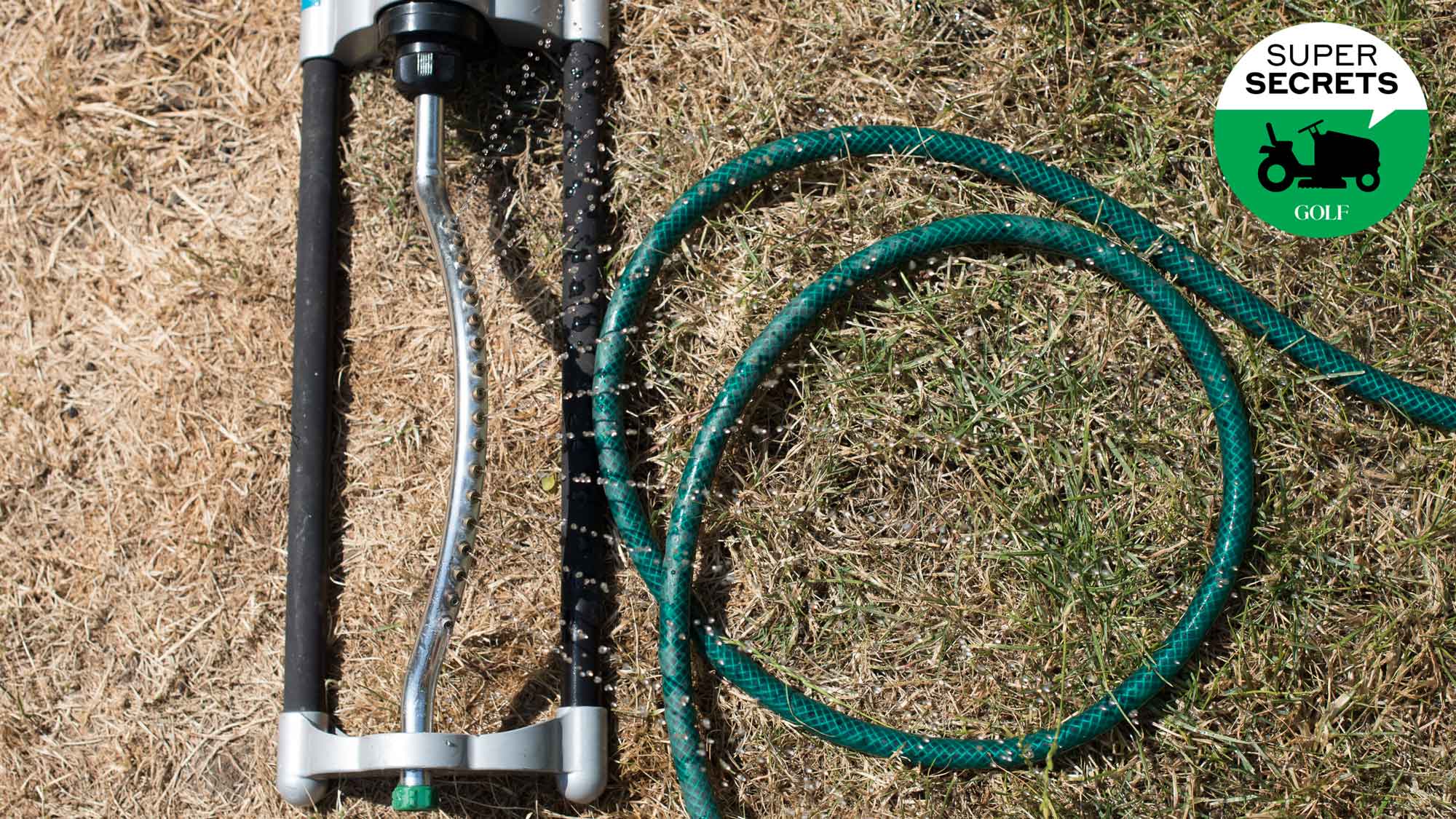If you can’t stand the heat, you’re not alone. Scorching temperatures, like the kind we’ve seen in recent weeks from coast to coast, are tough on grass as well, which in turn presents a challenge for superintendents as they seek to strike a balance between healthy maintenance and resource management.
Dan Pollack is the assistant superintendent at Wilshire Country Club, in Los Angeles, where inland highs have been surging into the triple digits. We asked Pollack what turf care experts do in response to soaring mercury, and what lessons there might be for those of us tending to lawns at home.
1. The 411 on H20
Water conversation is critical year-round, but especially at the searing peak of summer. When temperatures skyrocket, the grass itself radiates heat that you can feel when you hold your hand just above it. While superintendents have all kinds of sophisticated tools for measuring soil temperatures and moisture levels, the hand-check method remains a good old-fashioned gauge, an on-course indication that the turf might need a spritz. In those instances, superintendents often carry out a light syringing, spraying a high cascade of water that rains down gently over a wide radius of turf. The goal, Pollack says, is to give the grass a break by “cooling off the canopy.” This practice is most common on greens and other tight-mown areas, as low-cut grass is especially vulnerable to heat.
Should you do this at home? Probably not, Pollack says, and not just because it requires extra work and extra water. The longer grass of your lawn likely doesn’t need it. As for other summer watering, it’s best to do that at the cooler bookends of the day, before the sun is up and in fighting spirits. Soaking your lawn mid-day isn’t just wasteful, as a good deal of water evaporates before it even hits the ground. It can also be bad for grass, creating a hot and damp environment that’s ripe for disease.
2. Raise your mowing heights
Letting your grass grow longer is a good way to help it withstand the heat of summer, as it “creates more plant mass, which can hold more water,” Pollack says. (Another benefit is that very often, the longer the grass, the deeper the root system, which helps turf survive prolonged dry spells). How high should you go? Two to three inches is a good ballpark. “Imagine that you’re growing out tournament rough,” Pollack says. You can do this by raising your mowing heights or by simply mowing less frequently, cutting back from, say, twice a week in spring to once a week in summer. Talk about a lawn-care rarity, where doing less work is actually good for your yard.
3. Hold off on seeding
If you’ve got a bare patch on your lawn, you might be tempted to reseed it right away. Not a great idea, Pollack says, as grass seedlings require near-constant irrigation and, with many turf varietals, the high soil temperatures of summer are not conducive to growth. If you absolutely, positively can’t stand looking at that bare patch, you could sod it. But while sod isn’t as high-maintenance as seed, it still requires plenty of water and attention. As an aesthetic fix, Pollack suggests mulching instead. Autumn will arrive soon enough. That’s the better season to sod or seed.
4. Easy on the applications
Every now and then, superintendents will “spoon feed” grass in summer, giving it a small amounts of nitrogen to nosh on. But as a general rule, spring and fall are the seasons for fertilizer. Ditto herbicides and pesticides. It’s best not to use such products on your lawn in summer, as you run the risk of scorching the grass or creating conditions that invite disease.
5. Rethink your lawn entirely
Brown is the new green most everywhere in golf. No reason that it can’t be in your yard. You could take a page from the industry and try a turf reduction project. Depending on where you live, you might even get rid of your grass altogether without compromising on aesthetics, swapping it out for succulents or other drought-tolerant plants. Rock gardens can be beautiful, too. They’re commonplace in Southern California, and other arid areas of the country. “If you’re in an area that gets a lot of rain, that’s one thing,” Pollack says. “But if you’re basically living in a desert, it’s worth thinking whether having a grass lawn really makes much sense.”
